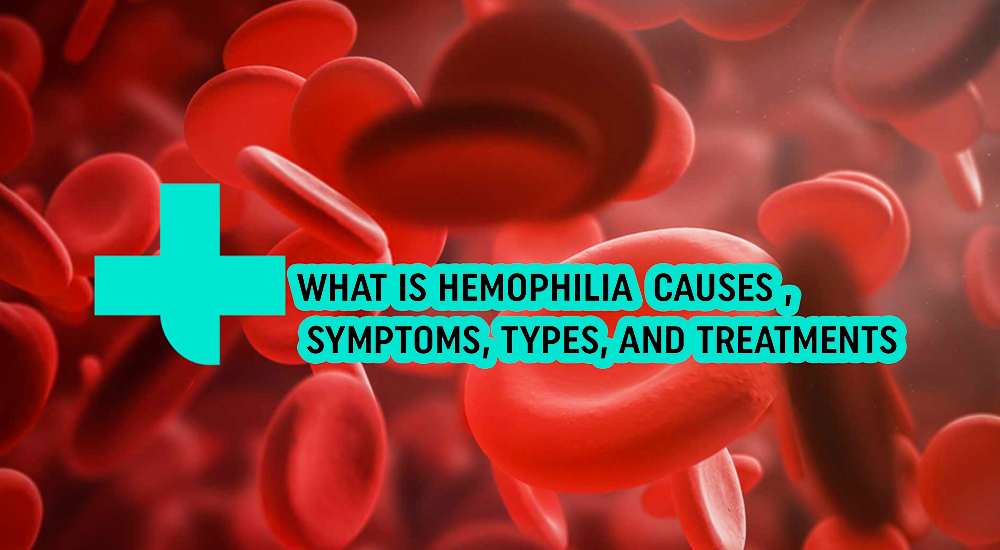
Hemophilia is a rare inherited blood disorder that occurs when the blood does not clot as it should, to make bleeding slow down or stop. This can result in excessive bleeding or bruising after surgery or injuries. People with hemophilia experience easy bruising, nosebleeds, or blood in urine or feces. Although it can affect both men and women, women are more prone to develop this condition. Doctors treat hemophilia by replacing the missing clotting factors.
What is hemophilia?
Hemophilia is a rare bleeding disorder that restricts the blood from clotting. This can lead to excessive bruising or bleeding after injuries or surgery. This condition appears when your body fails to make certain proteins called “clotting factors”. Clotting factors are essential proteins in your blood that work with platelets to create blood clots and prevent spontaneous bleeding.
Although there are several types of hemophilia, the most common types are accompanied by low levels of either factor Ⅷ or factor Ⅸ. The severity of the condition depends on the amount of protein factor present in your blood. Hemophilia can also cause internal bleeding, spontaneous bleeding and painful joints.
There is no complete cure for hemophilia, healthcare providers treat hemophilia by replacing the missing clotting factors. Fortunately, people receiving treatment live nearly as long as people who do not have hemophilia. However, healthcare providers are researching gene replacement therapy to cure hemophilia.
What are the types of hemophilia?
The three types of hemophilia includes hemophilia A, hemophilia B, and hemophilia C.
Hemophilia is not curable. Treatments are available to reduce the severity of the symptoms and prevent further complications.
What is congenital hemophilia?
Most of the hemophilia cases are considered to be congenital. Congenital hemophilia means that you have obtained the trait from both of your parents during birth. In most cases, hemophilia A and Hemophilia B occur in people with a family history of the condition.
What is acquired hemophilia?
Contrasted with congenital hemophilia, one may develop acquired hemophilia without any family history of the condition. Acquired hemophilia is a rare autoimmune condition, that occurs when the immune system creates antibodies that attack the clotting factors in the blood.
What are the symptoms of hemophilia?
The symptoms depend on the severity of the condition. There are three levels of severity associated with hemophilia A and B, each with its distinctive symptoms. Hemophilia C is considered the mild form and causes symptoms similar to the mild cases of hemophilia A and B.
Mild cases of hemophilia A and B cause:
However, doctors can only diagnose milder forms of hemophilia during adulthood, because the symptoms usually occur after an injury or surgery.
As per the CDC, a person with hemophilia may experience:
What causes hemophilia?
The main cause of hemophilia is the mutation of genes that regulate the development of clotting factors. These clotting factors are essential for creating clots to conceal wounds. In the majority of cases of both hemophilia A and B, the gene mutations come from a parent. Apart from that, hemophilia may occur due to a spontaneous mutation in people with no family history of the condition.
How is hemophilia diagnosed?
Healthcare providers diagnose hemophilia with the help of a blood test. This also helps to determine the deficiency of clotting factors, and the severity of the condition.
Hemophilia A severity levels:
Hemophilia B severity levels:
How is hemophilia treated?
There is no complete treatment for hemophilia. Healthcare providers use certain treatments to reduce the severity of the symptoms. However, the treatment depends on the type of hemophilia you have. The treatment helps replace the missing clotting factors to form blood clots and prevent blood loss. Your doctor may recommend factor replacement therapies, aminocaproic acid, non-factor replacement therapies, and physical therapy.
Hemophilia is an inherited blood condition that restricts the body from forming blood clots, leading to spontaneous or internal bleeding. Although various treatments are available to reduce the symptoms, you will require medical treatment for the rest of your life.